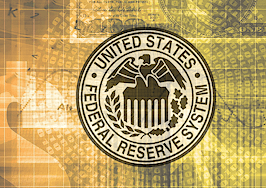- The most reassuring sign for mortgages and housing: a damaging report did only modest harm.
- However, the credit markets have overdone their hope for “no-Fed” for the rest of 2016. Data is strong enough that the Fed will have to take out some insurance -- probably not at its meeting on the 16th, but April and summer on the table again.
The most reassuring sign for mortgages and housing: a damaging report did only modest harm.
The 242,000-job surge in February payrolls could have blown us up, but the 10-year T-note today is 1.90 percent, mortgages still in the high 3s. The 10-year from New Year’s Day to mid-February fell in a straight line from 2.30 percent to 1.66 percent and was certain to re-trace.
Big gains in jobs and a flicker of inflation might have reversed rates altogether — thus, holding here is good news. Friday’s report did lose force in its large number of jobs in poor categories (retail), and slim 2.2 percent year-over-year increase in wages.
However, the credit markets have overdone their hope for “no-Fed” for the rest of 2016. Data is strong enough that the Fed will have to take out some insurance — probably not at its meeting on the 16th, but April and summer on the table again.
That sense of future Fed action is the only routine aspect of the forces in play. The drop in rates early this year did not come from worldwide stock market crashes; fears for the underlying global economy benefitted credit markets. Those fears were so powerful that the interest rate markets ignored U.S. data strong enough to support gradual Fed tightening.
Early this year and still the greatest unknown: By what channel can overseas weakness slow the U.S.?
The traditional view: There is no such channel. Since U.S. exports are barely 15 percent of GDP (gross domestic product), who cares if overseas demand falters?
Reading the speeches of Fed officials is a peculiar hobby, but it beats hell out of reading the spin-salesmen on Wall Street, including their captive economists. The newest Fed speeches are extraordinary in their division.
One group, all presidents of regional Feds, has delivered work entirely focused on the domestic U.S. economy, and sticking to one guide for Fed policy: A too-low rate of unemployment is dangerous and must be raised by Fed action. The group: Mester, George, Lacker, Lockhart and Williams. I am not a fan of any.
The second group is led by governor Lael Brainard, who this week gave an inspired talk focused on the outside world and its effects here. Moving toward her from group one: Dudley and Bullard. Already there, Rosengren, Evans and Kaplan (new dude in Dallas — watch him!).
Yellen has wisely been silent. Her vice-chair, Fischer, is a traditionalist who has struggled mightily with a changed world, but gets it.
So, review the outside world. Europe’s economy is held above water by the ECB (European Central Bank), soon to meet again, and further stimulus may help our rates — but it’s beyond the capacity of the ECB to fix the euro. The German 10-year is 0.24 percent, Spain’s 1.55 percent. Spain, Portugal and Ireland after recent elections have no governments.
Japan is fibrillating, its 10-year minus-0.035 percent, every Bank of Japan measure to induce growth, inflation and a lower yen a complete failure.
China. Xi is a world-experienced man. He must know that cracking down on all dissent will impede any move toward a market economy (if market economies have anything, it’s active expression of discord). Must he enforce discipline not seen for 20 years or more because harsh economic measures lie ahead in a hard landing?
The emerging world is submerging. Not good to be swimming close to China when she goes down. Brazil’s leadership, present and past, has been caught in corruption, its government no longer functioning. Its central bank rate is 14.25 percent, inflation 11 percent, GDP shrank last year by 3.8 percent and on track for another 4 percent this year. 200 million people. The other emergings are not as bad as that (Venezuela excepted), but even the Asian Tigers feel China’s slide and currency war.
For all of that grim litany, where is the transmission to the U.S.? The world’s circulatory system is its banks. U.S. banks are stress-tested and recapitalized. To threaten them via international interbank contagion would require a great deal of debt default overseas, including sovereign debt, and that’s the fear that will limit the Fed’s range of action.

U.S. 10-year T-note, last three months.
U.S. 10-year T-note, last three months.

Fed-sensitive 2-year T-note, two years back.
Fed-sensitive 2-year T-note, two years back. February data has been too strong. 2s traders are building-in another Fed hike before summer.

The most recent spike in core PCE.
If the most recent spike in core PCE is transient, okay. If not, the Fed is coming no matter what else, and faster.

U.S. trade resembles the world, both imports and exports falling. However, we are the reverse of most places, exports falling faster than imports.

This chart is beginning to drive everyone nuts. In theory, non-inflationary growth is the sum of population growth and productivity. In theory. But we really don’t know how to measure productivity — in theory work hours divided into value produced. In practice, I think heavily distorted by global forces distorting everything else.

The vibration in the Atlanta Tracker indicates far more the struggle of old-fashioned indicators to describe a new economy than real volatility in the actual economy.

The ECRI in its long, long history has had only one false call (a recession did not appear in 2011). Now its recession model is flashing a warning, but ECRI doubts its own data! ECRI sees the U.S. economy as plodding forward, not in the slide to recession in its chart.
Lou Barnes is a mortgage broker based in Boulder, Colorado. He can be reached at lbarnes@pmglending.com.









